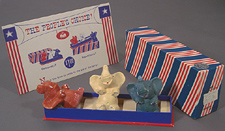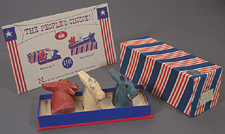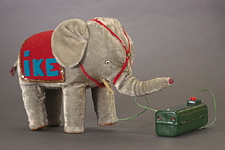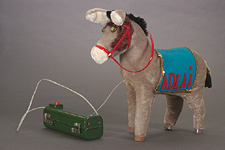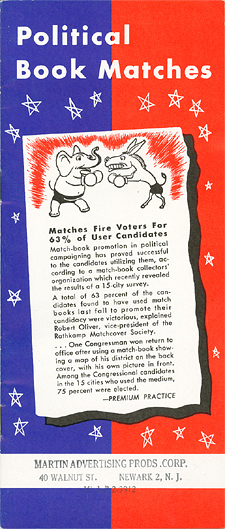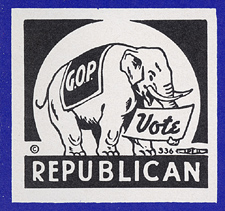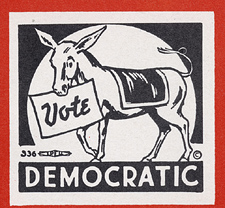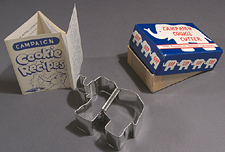
Symbols & Mascots
The Elephant & Donkey
It was Thomas Nast, the celebrated Harper’s Weekly cartoonist, who popularized both the Republican elephant and the Democratic donkey. An ardent Republican, he criticized his party in 1874 by depicting its vote as a marauding elephant—aimless and confused. Nast subsequently used the animal to depict the party itself. The GOP elephant quickly caught on, and by the late nineteenth-century Republicans had embraced the pachyderm as their own mascot.
Unlike the Republican Party, the Democratic Party has been symbolized by a variety of animals, including the tiger and the rooster. The donkey (or “jackass”) had appeared in 1830s anti-Jackson cartoons, but Thomas Nast drew the first cartoon that jointly depicted both the Republican elephant and the Democratic donkey. As other illustrators emulated Nast’s choice, the donkey emerged as the party’s symbol. The Democratic Party itself preferred the rooster, and used it into the early 1900s. By 1932, however, the donkey had become the party’s sole national symbol.
Elephant Cookie Cutter, 1956.
Elephant and Donkey Soaps, 1956.
Elephant and Donkey Mechanical Toys, 1956.
Martin Advertising Products. Political Book Matches, Newark, New Jersey, 1956.
This non-partisan pamphlet advertises “political book matches” made to order for particular candidates, featuring the familiar donkeys and elephants of the two major political parties.
